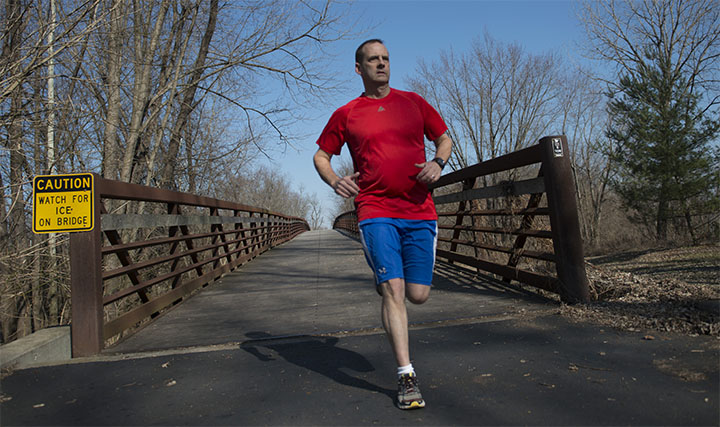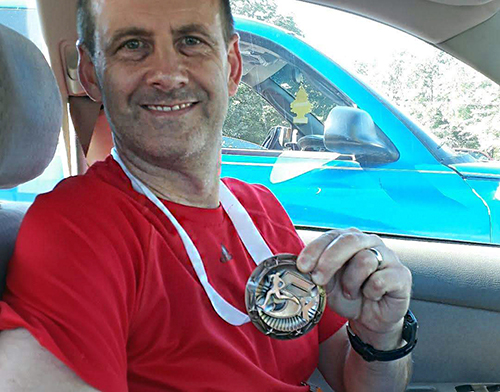
Don's story
Hemifacial spasm
The twitch was in his face, but the sadness went much deeper.
Don had hemifacial spasm, an involuntary twitching or contraction of the facial muscles on the right side of his face, and it was continuing to worsen. It had started below his right eye more than a decade ago, then spread down his cheek to his mouth and sometimes even his neck. For the last three or four years he had been treated with injections of botulinum toxin every three months. Those injections helped -- paralyzing the tiny muscles that were twitching – but they had their own drawbacks. When Don smiled, the left side of his mouth would rise normally, while the right side remained frozen.
And as the injections wore off, the unwanted movements returned with a vengeance, flaring up when he was under stress. With treatment or without, Don was self-conscious, afraid to look people in the eye. The spasms also interfered at church when he sang in the choir and played his guitar as part of a group.
“I had quite a bit of facial movement going on,” Don recalls. “I didn’t totally avoid social events, but I didn’t look forward to them. I didn’t like being around a lot of people because of embarrassment. I’d avoid making eye contact with people, because it was hard to do that. I was self-conscious, and I wasn’t myself. It was difficult. You wonder, ‘Do people notice that?’”
More than once the neurologist who treated Don with botulinum toxin (marketed as Botox, Dysport, Xeomin, and Myobloc) spoke to him about the surgical option. After thinking it over for some time, Don agreed that he wanted to make an appointment with George Mandybur, MD, a neurosurgeon with Mayfield Brain & Spine.
“I wanted to be reassured,” Don says. “I wanted to talk to him and think about it, which is what I did. And after a while, I decided to do it.”
Dr. Mandybur explained the procedure, called a microvascular decompression. The surgeon makes a tiny hole about the size of a quarter at the back of the head. The surgeon locates the facial nerve (the 7th cranial nerve) at the brainstem and then places a Teflon sponge between the facial nerve and the blood vessel that is pressing against it.
Still, Don worried. “This was an elective surgery,” he reflects. “I wondered, am I doing something about something that’s not a big deal? The family support was really critical to help me go through with it. I asked my dad -- he’s really frank and candid – while we were driving to the hospital, ‘Do you think I’m over-reacting? This is serious surgery. Can you notice it really?’”
His father’s blunt response: “You’d have to be blind not to notice it.”
Dr. Mandybur’s objective during Don’s surgery was to place a sponge on both sides of the offending blood vessel. During the three-hour procedure Dr. Mandybur used an intraoperative nerve monitoring system to determine when Don’s facial nerve had been adequately decompressed. “Not all surgeons do it this way, but it is routine for me,” Dr. Mandybur says.

photo by Joe Simon
When Don woke up from the anesthesia, he knew at once that his life had changed. “I could tell,” he says. “My eye felt relaxed. I didn’t realize it until after the surgery, but my eye had always felt pinched. When I came to, that side of my face felt so relaxed. The change was immediate. I also felt I had super hearing powers after surgery. I could hear the HVAC running, people talking in another room. That went away. I could swear I could taste the food better, but that went away too. Of course I was taking the pain killer, and something for nausea. But I felt good right away, really.”
Don spent two days in the hospital, then went home to continue his recovery, feeling blessed that Dr. Mandybur had been able to treat his condition.
Dr. Mandybur says studies show that patients with hemifacial spasm respond to surgery between 80 and 90 percent of the time, with very low morbidities. “One half of one percent will have permanent facial weakness, and 4 percent will have decreased hearing on the affected side, with associated dizziness,” he says. “Overall, it is considered a relatively safe and effective procedure and the only one that can cure this syndrome.”
Today, Don enjoys a vastly improved quality of life.
His symptoms are gone, he feels relaxed, and he enjoys making eye contact with friends. Recalling a moment he’ll always savor, he talks about watching his son’s soccer team, which he helped coach, a week after his surgery while keeping his distance from the ball (and keeping his scar safe).
“Being outside watching those kids play soccer, sitting on the bleachers, was nice,” he says. “I was feeling really glad I had that surgery.”
A runner, Don was cleared to run again three months after surgery and today is running 3 to 5 miles several days a week.
At work, meanwhile, Don feels like a new person. “I realize now how hard it was to focus before,” he says. “Now I can focus. It’s great to be myself again. Now my kids can see the real me.”
~ Cindy Starr
Hope Story Disclaimer - "Don's Story" is about one patient's health-care experience. Please bear in mind that because every patient is unique, individual patients may respond to treatment in different ways. Results are influenced by many factors and may vary from patient to patient.

